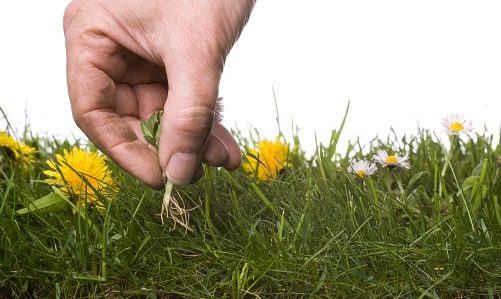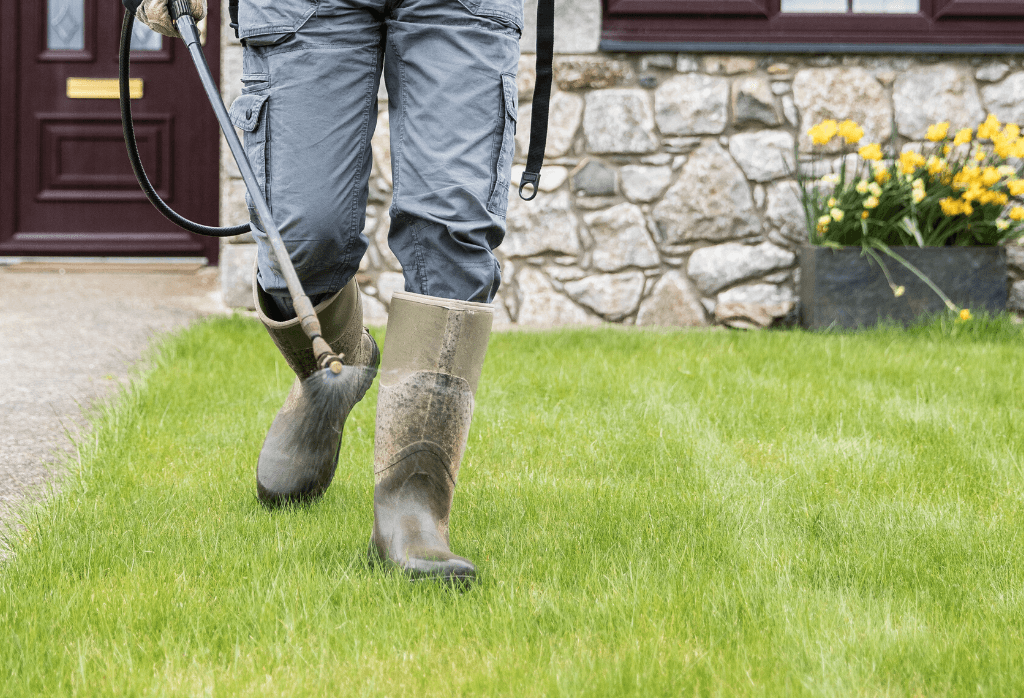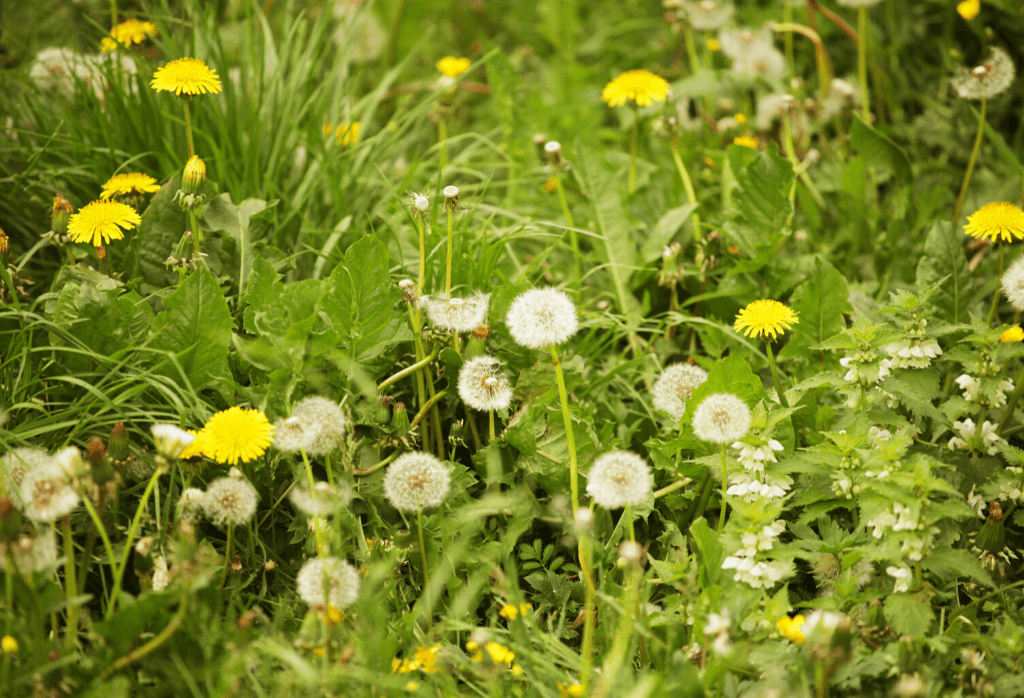How To Get Rid of Broadleaf Weeds
Weed noun: a wild plant growing where it is not wanted and in competition with cultivated plants.
With less than 2 months until Spring, you may need to be thinking how you’re going to keep weeds out of your healthy green grass. While early prevention is key to preventing a weed infestation during the growing season it’s very important to make sure you’re using the correct weed control t do so. First, let’s make a distinction between pre-emergent and post-emergent weed controls. Pre-emergents are used to prevent the growth of germinating annual grassy weeds, like crabgrass. They must be applied before germination takes place. There are liquid and dry pre-emergent products; depending on the situation, either choice works well. Let’s focus on summer broadleaf weeds and how to control them. Does it matter which weed control to use? After all, the objective is to just get rid of the weeds!






The fact is, weed controls are not all alike. Some are chemical-based products; some are naturally occurring organic materials. Clear data has shown for decades that chemical weed controls can be relied on to work effectively when used properly, while organic products have delivered somewhat sketchy results, at best. Still, folks who are not comfortable applying chemicals on their lawns, continue to use organic products, like corn gluten, whether they are as effective in controlling broadleaf weeds or not.
No matter which type of control you select, the key to effectiveness is understanding how these products work and following labeled directions. Not everyone understands that, in order for a dry, granular broadleaf weed control to control, say, dandelions, the material must be applied to moist foliage and remain on the plant for several hours. After application, the control material is slowly absorbed into the leaf blade or root system [depending on the type of chemical applied] and translocated throughout the entire weed. Only when translocation is completed can the entire plant be eliminated. This control process, while dependable under normal use conditions, can take three to four weeks to complete the job. While leaves should begin to curl in 3-5 days, complete control takes longer.
Liquid, broadleaf weed controls must be applied when the weed is actively growing. When temperatures are cold or when summer daytime temperatures soar into the 90s, plants, including weeds, slow down; in some cases, growth stops almost completely. When this occurs, the control material will not be absorbed and translocated. Result; little or no immediate control. When growing conditions are satisfactory, this problem does not exist.
Liquid weed controls are applied using water as the carrier or delivery system. And, most control products are applied in a very low concentration of 2% active ingredient or even less. So, when you see the spray flowing from a hose-end or hand can sprayer, what you are seeing is literally 98% water. Water is used to spread the control material thoroughly over the weed foliage. Thorough coverage is key to effective control.






If you choose to select a dry weed control, you must apply the material when the lawn is wet; from either dew, rain or hand watering. If the material does not stick to the weed blades, it simply will not be effective. For this reason, most lawn professionals use liquid controls, which can be applied at any time of the day. As mentioned, the material must remain on the weed for several hours, until taken up by the plant. When heavy rain occurs following an application, control material can be washed away, requiring re-treatment.
In some situations, no matter how effectively you apply weed control, a repeat application will be needed. This is simply because some weeds are tough and tolerate the selective control material better than others. Always apply the product as directed. Do not over apply or under apply product. If a repeat application is necessary, make that application in a timely manner, as directed.
Finally, no matter which weed control you choose, always follow labeled instructions for handling, mixing, and application. After applying a liquid control, you should stay off the treated area until the liquid has dried. Normally, this should take no longer than a 1/2 hour or so, often sooner. So, no kids and no pets on the wet lawn. Once dry, the material will stick to the weed, eliminating any significant risk to humans or animals as a result of contact with the skin.
ExperiGreen’s lawn care programs are specialized to prevent and treat weeds that grow in your lawn all season long. Click here to learn more about our programs and weed control services.
Join Our Free Lawn Care Newsletter
Stay Up to Date With The Latest News & Updates
* We don’t share your info with anyone ever.


